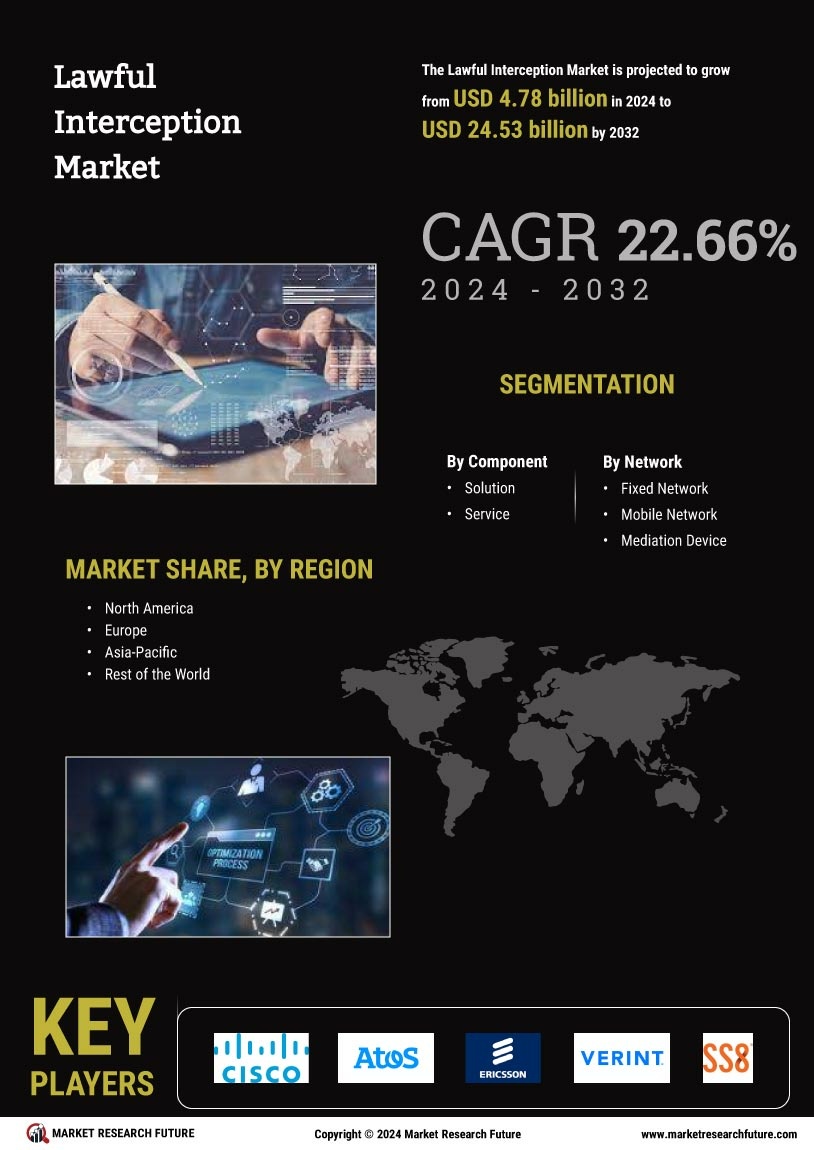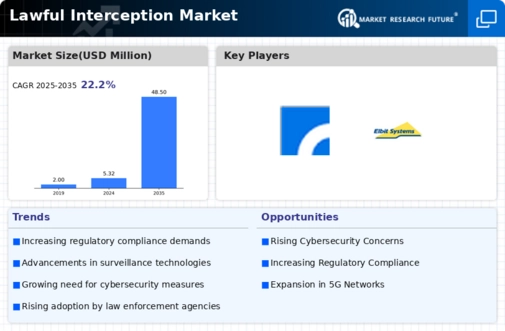By Region, the study provides market insights into North America, Europe, Asia-Pacific, Middle East and Africa and South America. North America consists of the U.S, Canada, and Mexico.
The North American Lawful Interception market, encompassing the U.S. and Canada, is a crucial segment driven by the need for enhanced security and regulatory compliance. The market is characterized by robust growth due to increasing concerns about national security, cyber threats, and the need for real-time data monitoring. The implementation of strict regulatory frameworks and legislation, such as the Communications Assistance for Law Enforcement Act (CALEA) in the U.S. and similar regulations in Canada, is a significant driver. These regulations mandate telecommunication and internet service providers to enable law enforcement agencies to intercept communications under authorized circumstances.
As a result, service providers are investing heavily in lawful interception solutions to ensure compliance and avoid penalties.
The European Lawful Interception (LI) market is characterized by its intricate regulatory framework and technological evolution, driven largely by compliance with stringent legal requirements and advancements in communication technologies. The market is bolstered by the European Union’s General Data Protection Regulation (GDPR) and the European Electronic Communications Code (EECC), which mandate robust mechanisms for monitoring and intercepting communications to combat crime and ensure national security. The demand for lawful interception solutions is thus closely tied to the need for enhanced data security and regulatory adherence.
European countries, given their diverse legal systems and compliance requirements, present a complex landscape for LI solutions, necessitating tailored approaches to meet both national and EU-wide regulations.
The Asia Pacific Lawful Interception (LI) market is experiencing significant growth driven by rising security concerns, stringent regulatory frameworks, and advancements in communication technologies. This market encompasses technologies and services that enable governments and law enforcement agencies to monitor communications for legal purposes. The increasing threat of cybercrime and terrorism has heightened the need for effective surveillance systems across the region.
In the Asia Pacific region, countries like China, India, Japan, and Australia are leading the adoption of lawful interception technologies. China's robust focus on national security and its large-scale investment in surveillance infrastructure drive substantial market growth. The country's expansive network infrastructure necessitates sophisticated interception systems to manage and monitor vast amounts of data. Similarly, India’s growing focus on counterterrorism and crime prevention has led to the implementation of comprehensive surveillance frameworks, which has bolstered the demand for lawful interception solutions.
FIGURE 3: LAWFUL INTERCEPTION MARKET SIZE BY REGION 2023 VS 2032

Source: Secondary Research, Primary Research, Market Research Future Database, and Analyst Review
Further, the major countries studied in the market report are the U.S., Canada, Mexico, Germany, UK, France, Italy, Spain, China, Japan, and India.













